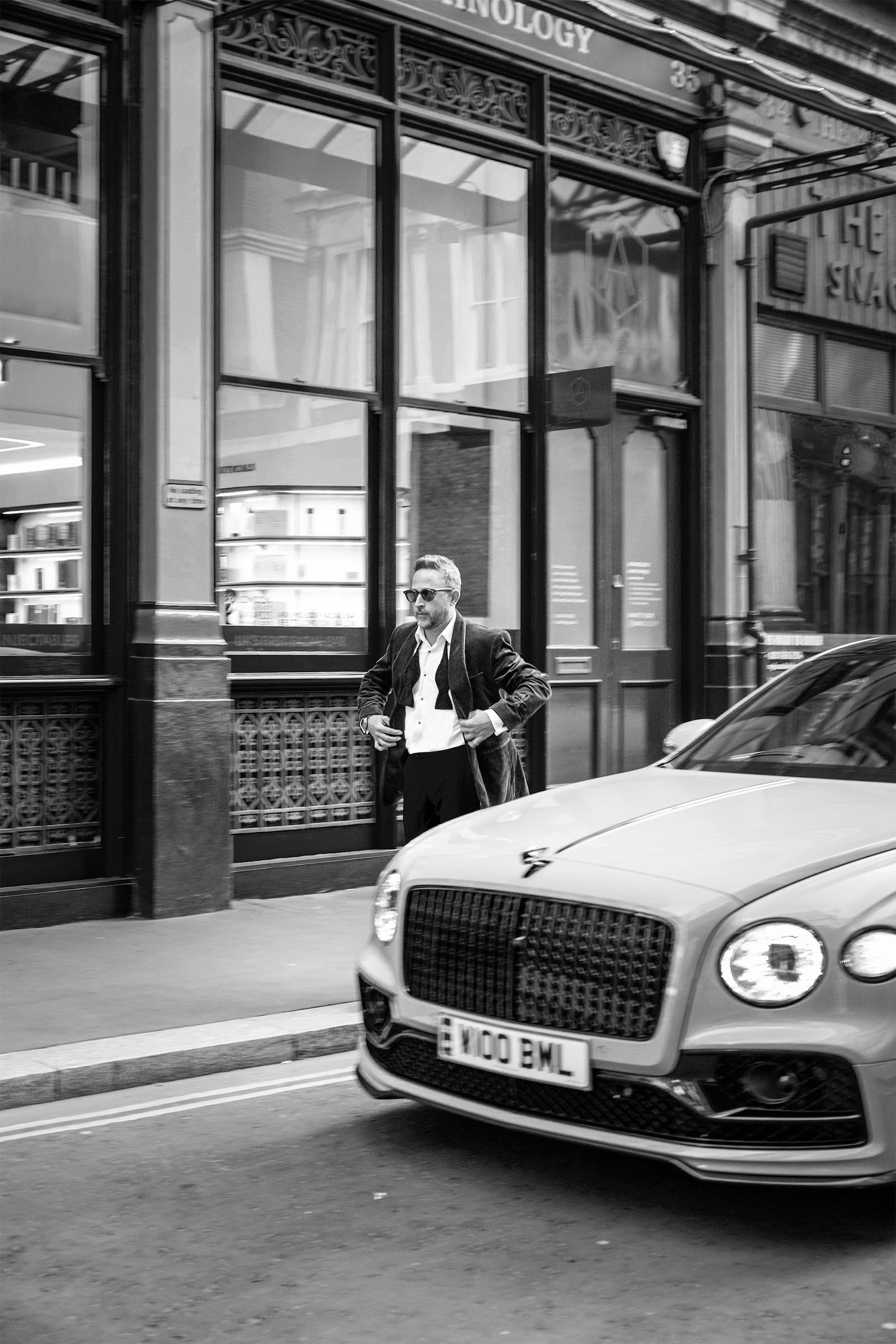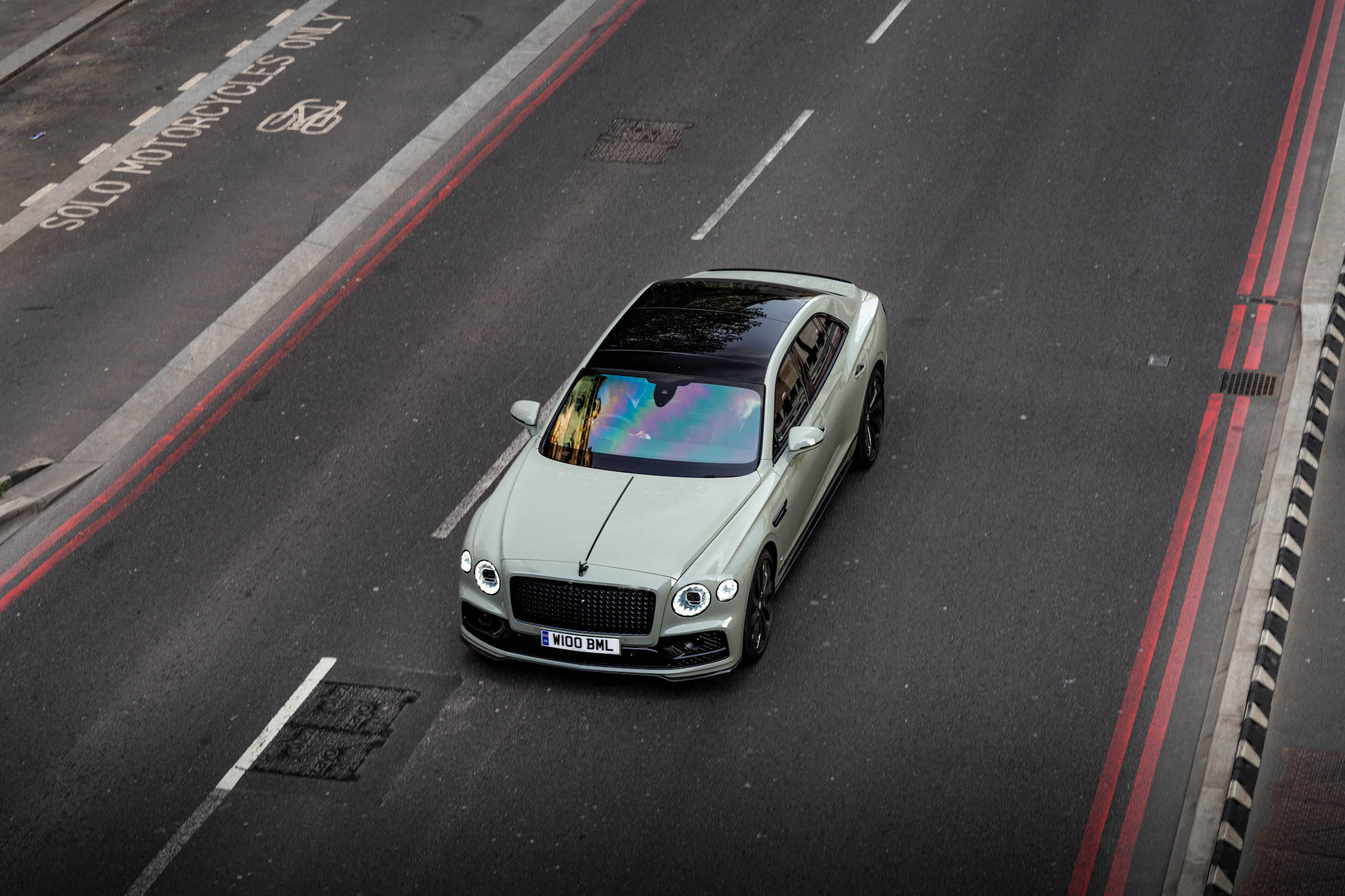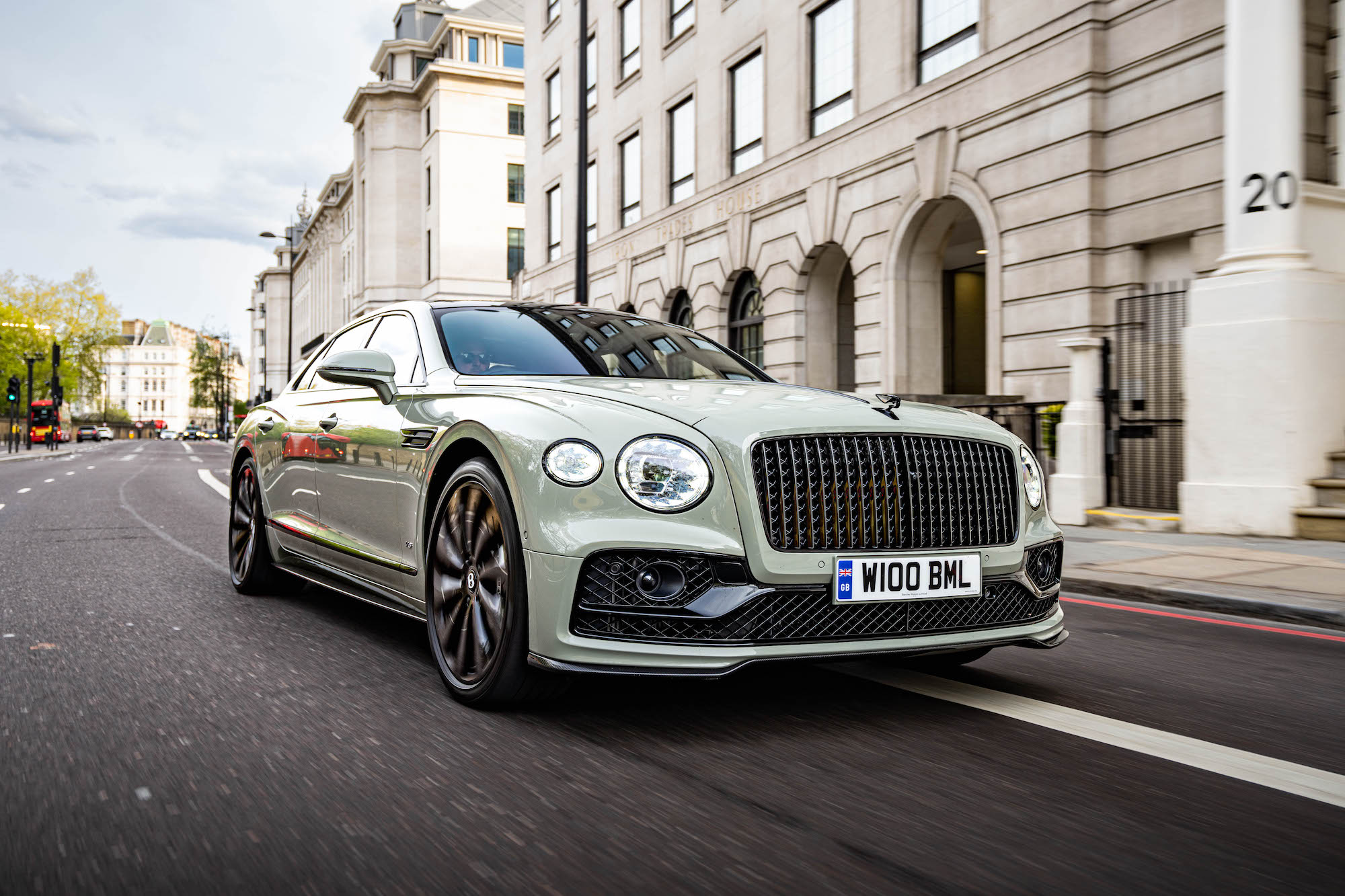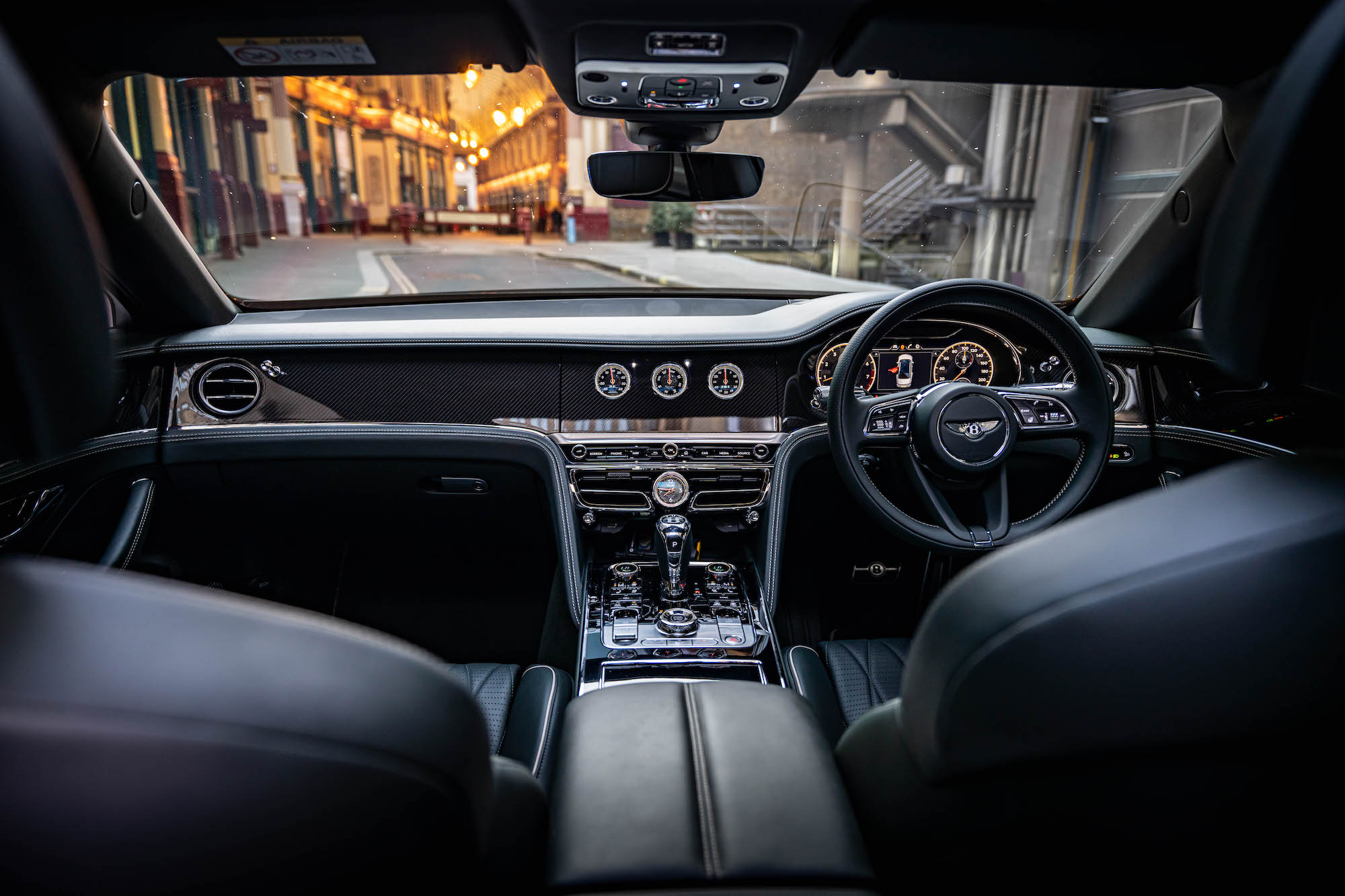It was in 1952 that designer J.P Blatchley and engineer Ivan Evernden set out to create a marque that would re-establish Bentley as the king of grand tourers. Their creation was a sleek and luxurious high-speed cruiser that quickly gained widespread acclaim, thanks in part to the exquisite bodywork by H.J. Mulliner. Ladies and gentlemen, please be upstanding for The Flying Spur.
The S1 coupe and four-door sedan followed, with nearly 3,000 sedans produced. Then, six months later came the Continental; an uprated variation with a lighter body. H.J. Mulliner felt that some customers would prefer a coach-built four-door S1 Continental to the models produced by the factory, and thus the “Arthur Talbot Johnstone” was born. It was such a catchy nomenclature that only 217 were built, and only one remains in Bentley’s Heritage Collection to this day.
READ THE FEATURE IN THE ALICIA AGNESON EDITION HERE
In 1959, a more powerful all-aluminium V8 engine became available, and the S2 replaced the somewhat ageing S1. It was the same year that Bentley Motors acquired HJ Mulliner, rolling it into an in-house bespoke division. HJ Mulliner offered drophead and coupe versions, in addition to the four-door iteration for those who desired a coach-built body. In total, 2,308 S2s were built.
The S3 version was introduced between 1962 and 1965 and was also available with the rather stately Mulliner body. The Flying Spur’s legacy as a grand touring classic was firmly established, but after ‘65, the trail went decidedly cold.

Given the 4.0-liter V8 Flying Spur’s 5.3-metre proportions, and despite shedding 100kg from the 6.0-liter W12 incarnation, I was still pretty keen to get this particular beast out onto some legitimately open roads. After shooting the V8 around the city with Motoring Editor Aaron Edgeworth and Photographer Roger Chan, I was Isle of Wight bound. With a haul of Oliver Brown evening wear in the 420-litre boot, my first port of call after Yarmouth was the Island’s military road and onto supper. Built in the 1860s as part of the island’s military defences to link forts and barracks, the eleven miles of coastal road is some of the IOW’s finest.

Firstly though, let’s talk about this colour. A Sage Green exterior with Blackline specification shouldn’t work as well as this, but by god it does. Bentley’s dedication to preserving its brand heritage is evident in the Mulliner and extended paint palette, which covers a 30-year cross-section of the brand’s history. Dove Grey dates back to the Derby-era Bentleys of the 1930s. Claret, a duo-tone colour inspired by Royal Claret, has graced Royal Bentleys since the 1940s. In fact, Claret was created specifically for Queen Elizabeth II’s Golden Jubilee Bentley, although it’s unlikely one would find the Blackline trim present on a royal incarnation of the marque. The legendary Flying B mascot, radiator vanes, matrix grilles, side window surrounds, and lower door and rear bumper blades all receive the Blackline treatment. The front and rear light bezels, door handles, wing vents, and exhaust outlets are also cloaked in darkness, enhancing the car’s rather distinguished visage. The black, 22-inch, ten twin-spoke alloy wheels further contribute to the Blackline specification’s striking appearance, giving the car an aggressive yet refined look.
Ferry dispatched, I headed south towards Freshwater as I tried to gauge how many holidaymakers had exfiled out of the port ahead of me. One thing was for sure: the A3055 offers some biblical straights, sightlines are good and tight bends are relatively few. However, when the mist rolls in on a tempestuous afternoon, overtaking is not for the faint of heart. That being said, this particular power plant will take almost anyone driving anything in its stride. The V8 engine generates an astonishing 542bhp and 770Nm of torque, a mere 84bhp and 130Nm shy of the W12’s capabilities. Yet, due to its smaller size, the V8 sheds 100kg in weight, resulting in performance metrics that are strikingly similar. The V8 sprints from 0-62mph in a swift 4.1 seconds, a mere 0.2 seconds behind the W12. It’s the same 4.0 litre found in the Lamborghini Urus and the Audi RS 6 Avant.

Be prepared for that sonorous V8 note when you put the hammer down. It’s more pronounced than the W12’s; an intentional design choice to create a more engaging driving experience, I understand. Yet, at lower speeds during everyday commutes, the V8 maintains the Flying Spur’s signature poise, providing a tranquil driving experience. The V8 exhibits an ingenious ability to deactivate half its cylinders when only a fraction of the engine’s prowess is required. However, don’t anticipate a significant reduction in fuel expenses; the official combined fuel consumption is a modest 22.2mpg. Let’s be honest, though – you don’t care about that, do you?
Despite the lighter engine, the Flying Spur V8 tips the scales at over 2,300kg, maintaining its status as an exceptionally muscular vehicle in the range. Yet the reduced weight on the front axle, improved weight distribution, and retuned suspension and steering systems coalesce to create a marginally more nimble automobile. It may not be fleet-footed, but the front end exhibits a more enthusiastic turn-in, supported by the four-wheel steering, which imparts a touch of sharpness over the W12.
When pushing the Spur to its acceptable legal limits, you can sense the car’s mass shifting. The steering is resolute, neither sluggish nor overly responsive, and the grip appears unending. This allows you to bound from one curve to the next with the Spur devouring tarmac as you navigate meanders with an elegance that belies its imposing presence. It’s hardly a sleeper in the truest sense, but I doubt anyone on the road expects it to lift its skirt as rapidly as it does.

The stretch from home base to the IOW is a mere 4-5 hours, not exactly a distance worthy of a Grand Tourer but enough time in the saddle for me. The Spur glides effortlessly throughout, its suspension scoffing at the mere notion of permitting even the slightest disturbance to encroach upon the cabin. This is especially true at motorway speeds, where the Spur is as tranquil as a village hall in the dead of night. Dynamically, the three-chamber air suspension ensures a smooth, controlled ride at all speeds, while the 48-volt active anti-roll system keeps the grand saloon steady and level during rapid directional changes.

Inside, the Bentley Flying Spur V8 offers a prime level of opulence. Expect everything to have a knurled machined finish. The cabin features a combination of obligatory hand-stitched Cumbrian Green leather, high gloss carbon fibre veneers, finished with Portland contrast stitching and piping, creating a revered setting for both driver and passengers. This includes a 12.3-inch infotainment touchscreen, an optional Naim for Bentley audio system, and a host of driver-assist features.
If we’re considering the options list properly and avoiding spending hours on the configurator, take the rotating display, the touring specification and the Naim for Bentley audio system.
I am sure you’re sitting there asking the obligatory question of anyone with purchase intent, why the V8 and not the W12? It’s not merely the reduced power output that defines the V8; rather, it’s the sense that this incarnation of the Spur is a more content, well-rounded vehicle—lighter, better balanced, and with a touch more personality. The V8 Bentley Flying Spur elicits a true sense of occasion, masterfully melding opulence and comfort with character and cross-country prowess. The Flying Spur V8 embodies Bentley at its finest—a superlative testament to the marque’s capabilities.


